Northern Laos
December 26th-30th, 2007
By Dan Murdoch
“WELCOME to Laos: straw roofs, mud houses, kids on the street…and Beer Laos…lots of Beer Laos.”
Carlos.
CULTURE shock.
The way we’ve meandered slowly across the world we’ve completely avoided it. It’s all very well flying in from cold, stoney London to sticky, clingy Bangkok- that’s culture shock territory. But driving so slowly you get overtaken by cyclists is a different prospect. The changes are slower, more gradual, so you see a hint of China in southern Mongolia, a whisper of Turkey in east Bulgaria.
But driving into Laos proper for the first time, I felt stunned by the surroundings.
The little villages that exist in the northern mountains could not be more different from the Chinese mega cities we came from. It’s a different dimension, an old way of life.
No concrete, glass and steel here, this is town planning eau naturale: bamboo houses on wooden stilts with woven wicker walls, thick thatched roofs topping sun shelters, where locals sit around cooking sticky rice in bamboo canes over open fires.
Pretty, idyllic, backwards. Mesmerising homes in this remote wonderland.
This was unmistakably Laos, not that strange China-mirroring border town of Boten, and it is unlike anywhere else we have visited, from Slovakia to Mongolia, from Romania to Russia- nowhere else looks like this.

Before this I would probably have put Tajikistan as my favourite drive- the five days trying to get to the foot of the Pamir Mountains, when we hugged the rugged Afghan border.
But these mountains could not be more different. Tajikistan is all bare cliff faces and sharp, jagged outcrops reaching up straight and spiky, with a few shrubs and grasses. Northern Laos is all curves and lumps, soft lines clothed in thick jungle and blooming, exploding colours from all manner of tropical wonder.
The mountains roll up, in a swell, steep but rounded like camel’s humps, and where The Pamir’s are thick and slab like, these mountains seem to spurt up like little nipples leaving ample room between peaks for rangy, eye-watering views.
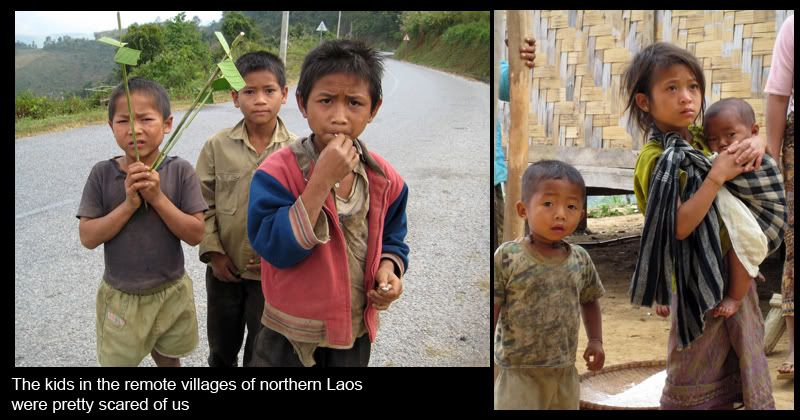
I watched a tiny little girl, she couldn’t have been more than nine or ten, walking around with a baby strapped to her hip in a papoose. She cuddled and nurtured the infant while the families elder females beat rice into a paste with heavy sticks of bamboo. We tasted the congealed pulpy grain, which the locals chewed from leaves. It had the texture of rubber and was declared ‘completely flavourless’ by OJ.
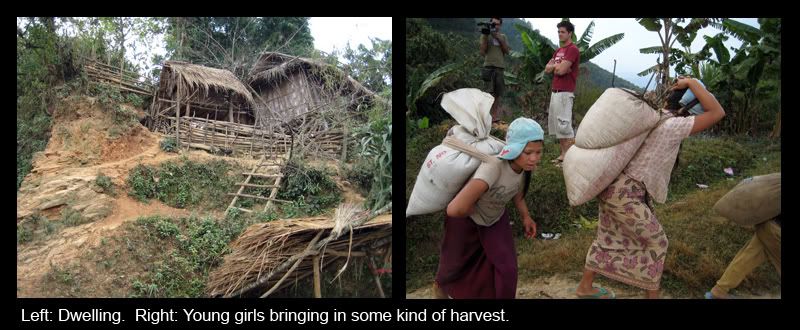
Because all the houses here are made of wood, with rush roofs and wicker walls, everything feels so natural, so bountiful, so unlike any other country we have visited. The heat, the sun, the flowers, the forest- it feels like a natural utopia.
But there are dangers here. Just a few years ago the government rounded up hundreds of bandits who had terrorised traffic along Route 13, the same road we were travelling, and the north is rich in opium. On separate occasions I saw three or four men walking the road with an AK47 strapped to his side. One of the men was in khaki green and could feasibly have been military. But the others I saw were in faded T-shirts and grubby trousers looking every inch the jungle mercenary.
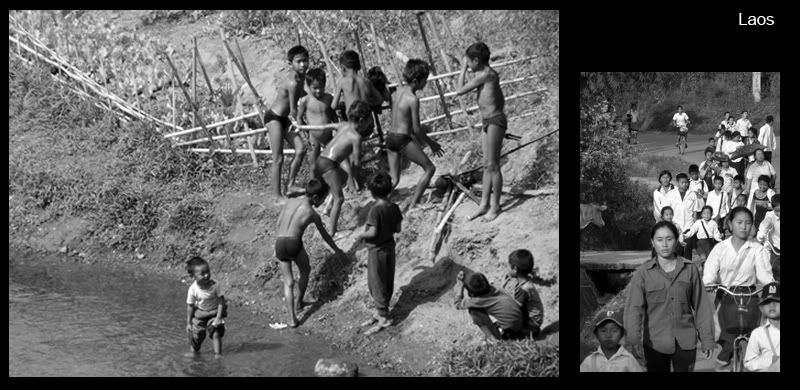
As we moved further south it felt like we were heading west. More and more signs of tourism- a couple of Spanish motorcyclists shared lunch and offered us a smoke, a whole car full of Germans were delighted to see Trabants so far from home, we passed a lone English cyclist and a fleet of Thai Volkswagen enthusiasts. There were more Chinese and Japanese tourists than I remembered too.
We spent two nights trying to get south to Luang Prabang, the first camped on the side of the road, the second in a two-bit transfer hub after a Fez breakdown. Fez kept playing up and people began getting a little frustrated with it, especially since we had just decided to ditch Dante instead.
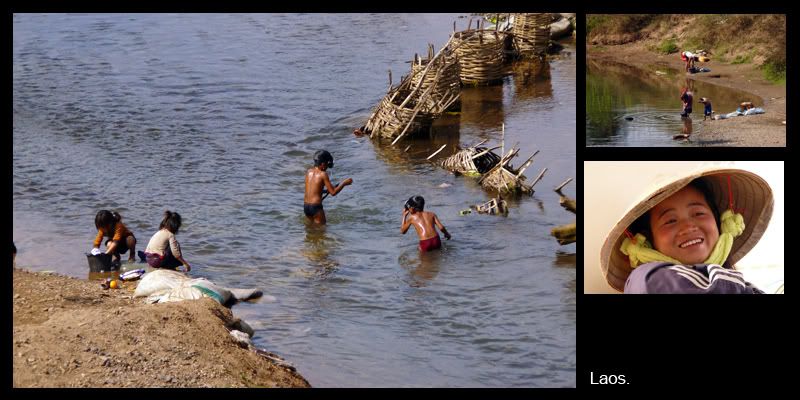
We weren’t in Luang Prabang for long, but here too we were greeted by a new sight. Hordes of westerners, mostly couples mid-30s to late-60s. I hadn’t seen so many white people since Europe and it was a little off putting. The whole town is based around tourism, it’s a world heritage sight, and the sort of place retired French couples visit.
It was strange, like coming to an all inclusive resort after months in places that couldn’t attract a traveller with all day happy hour and free internet.
Carlos and I spent a relaxed day working on Fez, drinking, smoking and lapping up the sun.
ENDS
mrdanmurdoch@gmail.com
Laos number: +856 (0)20 284 1195
Thai number: +66 83 985 1615.
TO SEE OUR PROGRESS ON VIDEO, PUT TRABANT TREK INTO YOU TUBE.
If you read and enjoyed this blog, why not show your appreciation by making a small donation?
www.firstgiving.com/trabanttrek
100% of your donation goes to Cambodian children’s charities.

Ends
mrdanmurdoch@gmail.com
For more of Dan’s blogs visit: http://danmurdoch.blogspot.com or www.trabanttrek.orgmrdanmurdoch

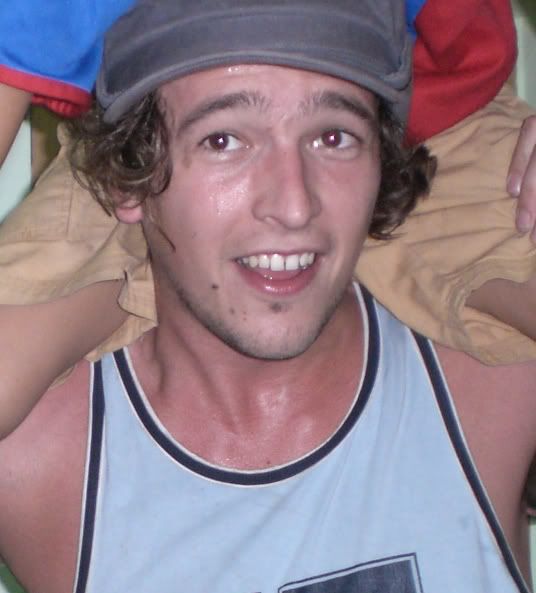
No comments:
Post a Comment